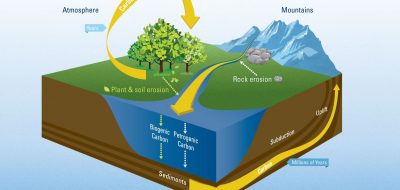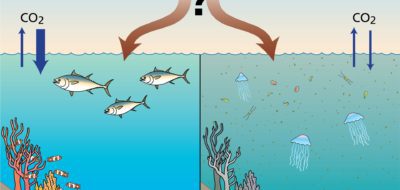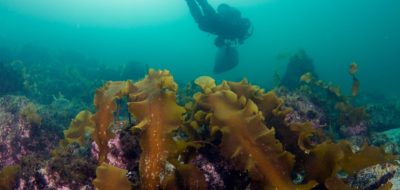Ocean-Based Climate Solutions
Over the last century, the ocean has absorbed nearly a third of the carbon dioxide that humans have pumped into the atmosphere through the burning of fossil fuels. But even with all the carbon the ocean removes from the atmosphere, our planet is on track to exceed a global 1.5°C temperature increase within the next 20 years unless we take immediate measures to reverse this trend, according to the 2021 report from the Intergovernmental Panel on Climate Change.
At this point, cutting our reliance on fossil fuels is not enough. Scientists are studying ways to remove and store the excess carbon dioxide already produced. The ocean, which covers more than 70% of our planet, is a promising place to start.
Coastal ecosystems—seagrass beds, mangroves, and saltmarshes—store an immense amount of blue carbon. With many of these environments in global decline, protecting ones that still exist and restoring others is one way the ocean can capture and store more atmospheric carbon.
A technique known as ocean iron fertilization could also increase the ocean’s ability to store carbon. Adding small amounts of iron to the ocean’s surface can trigger phytoplankton blooms that remove carbon dioxide from the atmosphere.
Another technique could involve adding alkalinity to the ocean, which may counteract ocean acidification and help the ocean store more carbon.
Finally, fast-growing seaweeds can draw substantial amounts of carbon dioxide out of the atmosphere, which makes seaweed cultivation a candidate for an aquaculture solution to climate change.
Transitioning away from fossil fuels and pulling excess carbon from the atmosphere is going to require a whole portfolio of options, some of which may rely on storing carbon in the ocean. WHOI Scientists are evaluating the benefits—and risks—of these ocean-based solutions.
Coastal Restoration & Blue Carbon
Blue carbon refers to atmospheric carbon captured and stored by the ocean, which mitigates the effects of climate change by storing carbon for long periods of time.
Iron Fertilization
Iron fertilization is a technique that would artificially add iron to the ocean’s surface, triggering massive blooms of phytoplankton that could remove substantial amounts of carbon dioxide from the atmosphere.
Ocean Alkalinity
When alkalinity reacts with carbon dioxide in the ocean, it converts it to a form that can’t readily return to the atmosphere as carbon dioxide gas.
Seaweed Cultivation
When seaweed removes carbon dioxide from seawater, it alters the balance of carbon dioxide between water and air, causing the gas to move from the atmosphere into the ocean.




